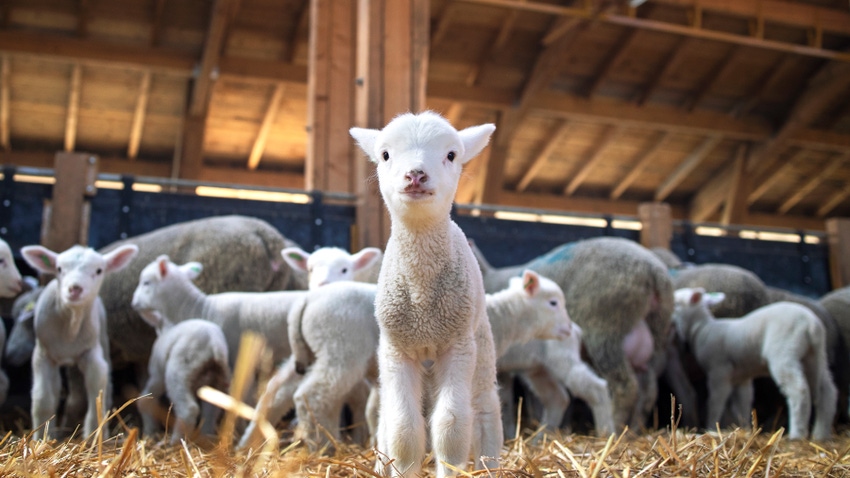
With lambing and kidding season arriving to ranches, now is the time to evaluate management and facilities for a successful spring crop. Brent Roeder, sheep and wool Extension specialist at Montana State University, shared health management tips for lambs and kids during a recent producer-focused webinar.
Sheep and goats are management-responsive, with nutritional, environmental or predatory stressors opening the door to disease.
“A lot of livestock management with sheep and goats is knowing how to manage the stress, especially in lambing,” Roeder said. “Knowing what to feed, when to feed, when to vaccinate, how to manage in the cold weather, how to keep predators out — all of those things play into maximizing your performance.”
While lamb loss is never ideal, Roeder said that it’s something that can’t be avoided. “It’s impossible to save everything, but proper facilities, nutrition and health protocols certainly help,” he said.
Manage for best results
Producers can often create more problems in the kidding and lambing barn than they can fix. “Heritable issues, like big teats or poor mothers — those things just devour your time in the barn,” he said. “Time is money, and so, I tell producers don’t put up with that stuff and get rid of it.”
Crowded conditions can bring in caprine arthritis encephalitis, ovine progressive pneumonia and ovine Johnes disease, which all drain long-term profits. “They get on your place, they get into your herd, and they start spreading,” Roeder said. “Doesn’t matter what your nutrition is, what your health protocol is, once an animal has one of these diseases a vaccine does not work.”
Especially in Northern states, poor ventilation can contribute to pneumonia in both young and old animals. “This really devours your short-term profits,” he said. “If you’re lambing in the January, February, March time frame in a fairly enclosed lambing system, a barn may not have sufficient ventilation.”
No matter your height, Roeder said it’s likely that the air you breathe in the barn is different than what lambs and kids are breathing lower down. “You need to get down on your hands and knees, put your nose down there about 6 inches off the ground. And a lot of times you’re going to have a strong ammonia smell coming out of the ground,” he said.
The ammonia can irritate lungs, which may cause the animals to develop pneumonia as lambs or later in life.
Avoid diseases
Early vaccination, managing environment for optimum conditions and keeping a close eye on flocks can help mitigate many health hazards for young animals as their life begins.
“We can stave off scours since that’s really managed by cleaning, liming, re-bedding and cleaning milk jugs,” he said. “Keeping that as sanitary as possible is the best thing.”
Slimy mouth can occur in lambs, goats and calves, and is caused from an e. coli infection in the animal’s lungs. “We don’t really know how exactly they get it, but basically it starts out as a clear slime on the animal. And as it progresses, they look like they’re drooling,” Roeder said. “You have to catch that one fairly early, within the first six hours or so.” He added that the only way they have seen control with this condition is to administer Nuflor orally to animals.
Before the umbilical cord seals over, it serves as a straight line for infection into the liver. “If you have a lamb that’s unthrifty, pot-bellied, kind of hump-backed, that’s a sign that they had some naval ill, and the liver has some infection in it,” he said. “There are a lot of products out there that are 2.5%, 3%, 5% iodine. But to get the naval cured and blocked off, you need to use 7% iodine dip.”
Roeder said to have a close relationship with a local veterinarian. “You do need a veterinary script for antibiotic feed. You can’t just go to the feed store and buy antibiotics anymore. It’s also difficult to get over-the-counter antibiotics, so you will need that prescription.”
“Everybody’s out there trying to find a veterinarian that’s good with small ruminants,” he said. “They’re hard to find.”
He also said ear and vaccine tags should be ordered ahead of time, as many producers are seeing back orders this year.
About the Author(s)
You May Also Like






